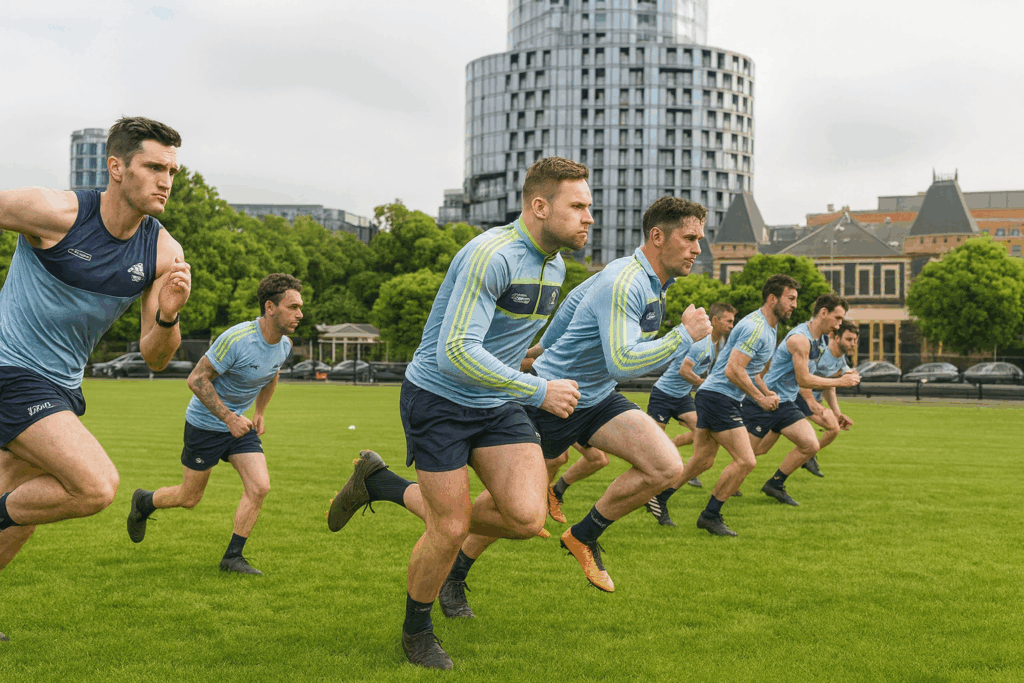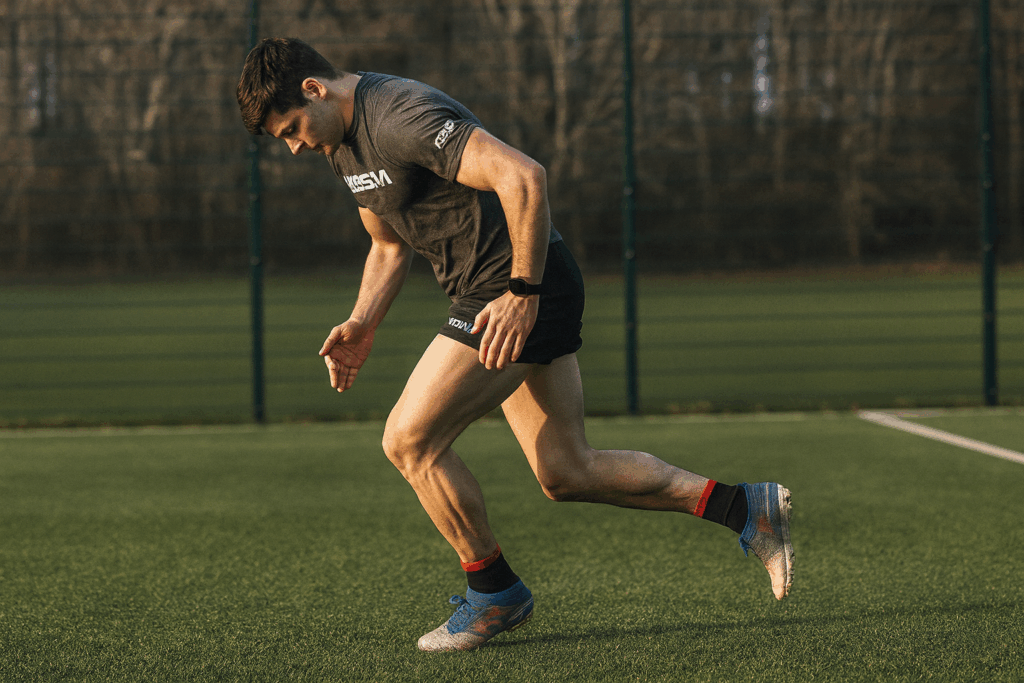Introduction
Gaelic football is an intermittent, high-intensity sport characterised by frequent high-speed running, placing significant demand on the hamstring muscles. The physical intensity and contact nature of the game predispose players to hamstring injuries, a growing concern in the sport. This blog explores a study that analysed the incidence, causes, and recurrence of hamstring injuries in elite Gaelic football and provides actionable strategies for prevention.
Study Overview
The study utilised data from the National GAA Injury Surveillance Database, established in 2007 by the GAA Medical, Scientific, and Player Welfare Committee. Data from 15 Division 1 inter-county Gaelic football teams was collected between 2008 and 2015, encompassing injuries documented during competitive seasons.
The study measured:
- Incidence of hamstring injuries.
- Mechanisms of injury.
- Recurrence rates.
- Comparative data with other elite sports.
Key Findings
1. Prevalence of Hamstring Injuries
- Hamstring injuries accounted for 21% of all injuries in inter-county Gaelic football.
- Injuries were 7 times more likely during matches than in training.
- 73.4% of injuries occurred during sprinting, and 97.4% were non-contact in nature.
2. Recurrence of Injuries
- 63.9% of hamstring injuries were new, while 36.1% were recurrent.
- 39% of recurrent injuries occurred within 8 weeks of returning to play.
- 44% of players with a previous hamstring injury sustained another injury.
3. Trends Over Time
- The prevalence of hamstring injuries increased twofold over the 8-year period.
- Between 2008 and 2015, the rate of hamstring injuries among elite players rose by 45%.
4. Comparisons with Other Sports
- Gaelic football had higher hamstring injury recurrence rates compared to:
- Australian Rules Football (20%).
- Elite soccer (16–23%).
- Sub-elite soccer (12.5%).
What Does This Mean?
Injury Trends and Concerns
Despite advancements in training and injury prevention, the prevalence of hamstring injuries in Gaelic football continues to rise. The study suggests that current training methods may not sufficiently prepare players for the physical demands of match play, particularly sprinting.
The Role of Sprinting
The findings highlight that most hamstring injuries occur during sprinting, where the hamstrings are subjected to high stress, strain, and contraction velocity. These injuries are almost entirely non-contact, indicating the need for targeted preparation to build the hamstrings’ capacity for high-speed running.
The Sprint Paradox: Risk vs. Preparation
High-speed running both increases the risk of hamstring injuries and is essential for preparing the hamstrings to handle these demands. Insufficient exposure to high-speed running in training or rehabilitation may leave players underprepared, contributing to the high rate of injuries during match play and when returning to competition.
Strategies for Preventing Hamstring Injuries
1. Regular Speed Training
True speed training occurs at 95%+ of maximum sprint capacity, as noted by renowned sprint coach Charlie Francis. To achieve this safely:
- Incorporate adequate rest and recovery between sprints.
- Gradually increase sprint intensity and distance over time.
2. Progressive Exposure to High Speeds
To minimise injury risk, players should:
- Gradually increase exposure to high-speed running.
- Allow time for physiological adaptation to the increasing demands.
- Introduce sprint work early in pre-season to build resilience.
3. Rehabilitation Protocols
For injured players, rehabilitation should:
- Include high-speed running at progressive intensities.
- Address biomechanical factors, such as sprint technique and strength imbalances.
- Extend beyond the return-to-play phase to reduce recurrence risk.
4. Improve Repeat Sprint Capacity
Players need the ability to sustain acceleration and sprint performance throughout the game. This can be achieved with:
- Repeated sprint training with short recovery intervals.
- Sport-specific sprint drills to mimic match demands.
Key Takeaways for Coaches and Players
- Emphasise Sprint-Specific Training:
Incorporate high-speed running into weekly training plans to condition hamstrings for match demands. - Monitor Recovery and Progression:
Ensure players have adequate recovery time to prevent overtraining and fatigue. - Adopt a Long-Term View:
Rehabilitation and injury prevention must focus on sustained resilience, not just short-term return-to-play goals. - Tailor Training to Match Demands:
Design drills that mimic the intensity and patterns of match play, particularly sprint bursts and directional changes.
Conclusion
The rising incidence of hamstring injuries in Gaelic football highlights the need for better preparation strategies. Regular exposure to high-speed running, progressive training, and effective rehabilitation protocols are crucial to building resilient hamstrings capable of withstanding the demands of match play.
By understanding the mechanics and risk factors associated with hamstring injuries, players and coaches can implement targeted strategies to reduce injury rates, enhance performance, and ensure long-term player health.





